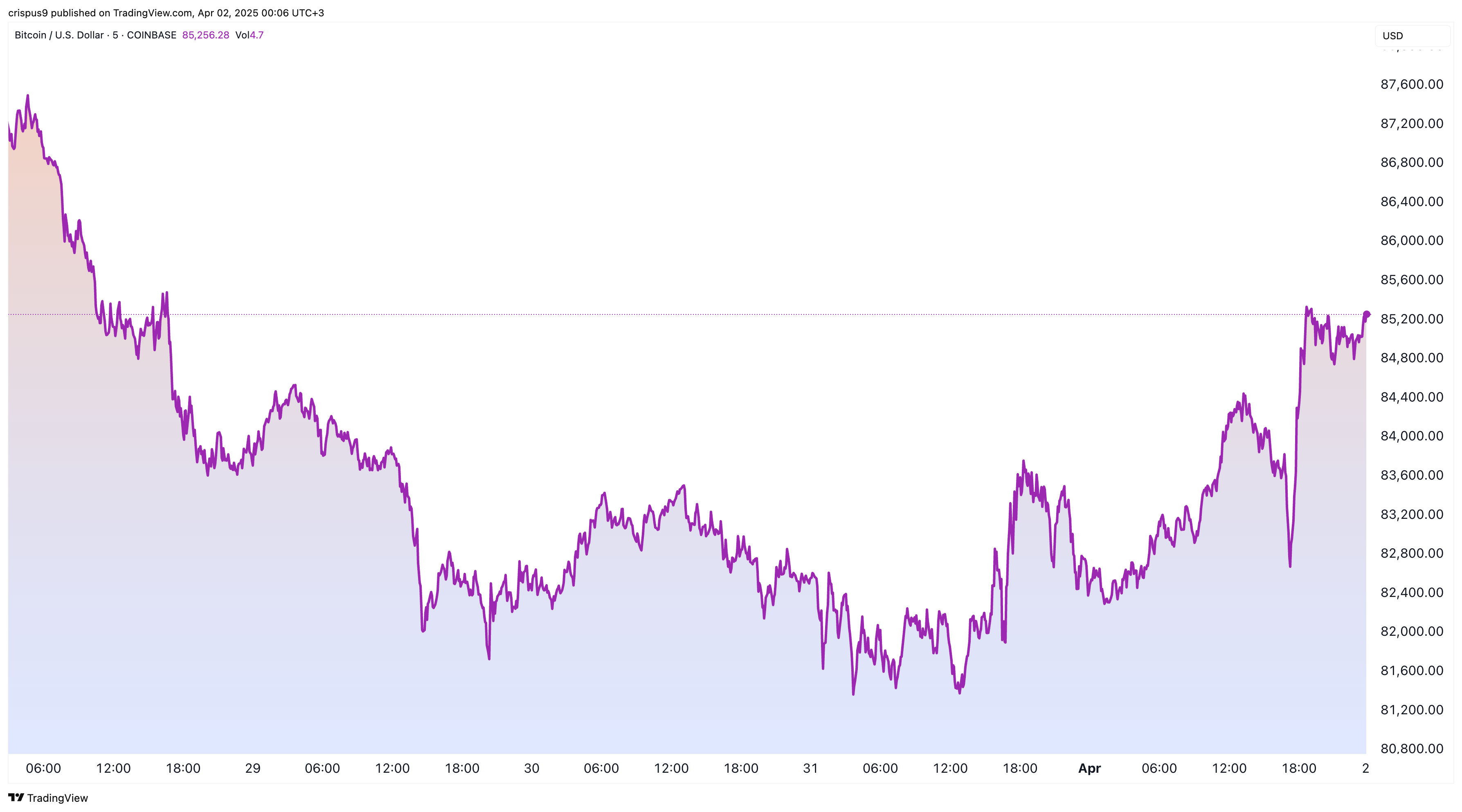Donald Trump will unveil his Liberation Day tariffs on Wednesday, a move analysts believe is a Black Swan Event. He will deliver these tariffs at the Rose Garden, and according to the White House, not many countries will be spared. So, how will these tariffs impact the price of Bitcoin (BTC) and other altcoins?
Donald Trump’s Liberation Day Tariffs Are Here
This year’s arguably biggest economic event will happen today when Trump unveils his reciprocal tariffs on most countries. His goal for implementing these tariffs is to ensure that the US charges these countries what they charge the United States.
With these tariffs, he hopes to achieve four goals: raise money to fund his tax cuts, bring manufacturing back to the US, reduce the trade deficit, and use them as a negotiation tool.
The risk, however, is that other countries will retaliate against the US. For example, the EU has created a package that may target companies in the services industry, where the US has a large trade surplus. This could hurt companies like Google, Facebook, and Amazon, which conduct significant business in Europe.
Trump’s Liberation Day tariffs come a few days after he unveiled a 25% tariff on all vehicle and parts imports. He has also added a 25% levy on steel, aluminum, and imports from Mexico and Canada.
Therefore, a prolonged trade war will likely trigger a recession in the United States and other countries. A high unemployment rate and weak consumer spending characterize a recession. Companies like Goldman Sachs and PIMCO have boosted their recession odds.
READ MORE: How Will Tariffs Affect BTC, XRP, HBAR, JASMY and Altcoin Prices
Silver Lining on Bitcoin and Altcoins
There is a silver lining to the Liberation Day tariffs and the possible recession. Most analysts believe that the Federal Reserve and the US government will need to intervene if the US sinks into a recession.

The government responded to the Global Financial Crisis by printing $700 billion and bailing out banks with it. It also unleashed trillions of dollars in stimulus during the COVID-19 recession.
During this period, the Fed slashed interest rates and implemented quantitative easing policies.
The government and Federal Reserve might take similar actions if tariffs lead to a US recession. Bitcoin, altcoins, and other risky assets may benefit when the government and the Federal Reserve flood the economy with money.
Evidence shows that these assets do well in such periods. During the pandemic, Bitcoin and altcoins soared to all-time highs. Similarly, stocks embarked on a decade-long rally after the GFC recession as the Fed left interest rates low.
However, there is a risk that the upcoming downturn may lead to stagflation, not just a recession. Stagflation is a situation where an economic downturn is accompanied by high inflation. In that situation, the Fed may decide to wait further before cutting rates since doing so would lead to higher inflation.
READ MORE: Top 4 Crypto to Buy With the Most Bullish Crowd Sentiment












